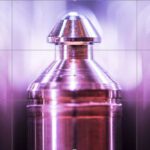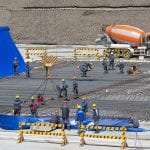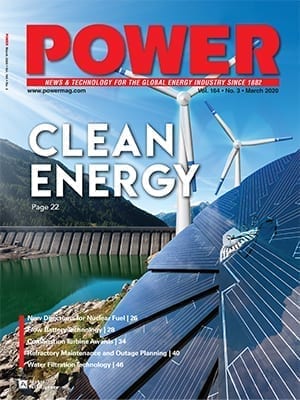Russia has launched its third cycle of testing innovative uranium-plutonium REMIX fuel at the Balakovo Nuclear Power Plant in Saratov Oblast, a key step that advances the closed nuclear fuel cycle technology. Designed to recycle spent nuclear fuel (SNF), the REMIX assemblies could significantly expand the raw material base for nuclear energy while reducing radioactive waste, according to nuclear fuel producer TVEL.
The third 18-month cycle of pilot industrial operation of REMIX-based fuel assemblies began at Balakovo Unit 1, TVEL announced on Dec. 2. Rosatom subsidiary Rosenergoatom initially loaded six TVS-2M fuel assemblies into the active zone of the VVER-1000 reactor in late 2021. Since then, the assemblies have completed two standard operating cycles under the strict oversight of federal nuclear watchdog Rostekhnadzor.
“At the beginning of 2026, during the scheduled preventive maintenance at the power unit, assemblies with REMIX fuel will be finally unloaded from the reactor core into the spent fuel pool, after which the fuel will be sent for post-reactor studies,” TVEL said.

Multi-Recycling to Boost Closing the Fuel Cycle
Rosatom has been pursuing verification of REMIX fuel use of VVER-1000 reactors as a strategic investment project since 2014. A key facet of the program envisions integrating reprocessed uranium and plutonium from SNF into Russia’s nuclear energy ecosystem. An explicit goal is to close the nuclear fuel cycle for derivatives of the VVER-1000, a pressurized water reactor (PWR) design that forms the cornerstone of Russia’s flagship Generation II+ nuclear power fleet and is a key export product for Rosatom.
Traditional efforts to reuse SNF have focused heavily on mixed oxide (MOX) fuel, which combines regenerated plutonium with depleted uranium to produce a viable fuel for thermal and fast reactors. While MOX fuel has been widely deployed in Europe and Japan and has proven effective, its approach inherently requires separate recycling streams for uranium and plutonium, adding processing steps and specialized infrastructure.
REMIX fuel (REgenerated MIXture of uranium and plutonium oxides) introduces an innovative approach to closing the nuclear fuel cycle by enabling multiple recycling of reprocessed uranium and plutonium into a single fuel type for thermal reactors. “Its fuel composition is produced from a mixture of reprocessed uranium and plutonium, which is formed during the processing of spent nuclear fuel, with the addition of enriched uranium,” TVEL explained.
The enriched uranium correction, containing about 16–17% uranium-235, ensures that REMIX fuel matches the energy potential of fresh uranium fuel. That capability allows for the repeated recycling of all recovered uranium and plutonium. After irradiation, the fuel undergoes a cooling period of five years in a storage pool before being reprocessed. Each cycle produces fuel containing approximately 4% uranium-235 and 1–2% plutonium, which could enable five to seven recycling iterations with fresh additions of natural or reprocessed uranium.
As crucially, REMIX fuel requires no changes to reactor design or significant additional safety measures. “Unlike uranium-plutonium fuel for ‘fast’ reactors (mixed nitride uranium-plutonium [MNUP] and MOX), REMIX fuel is characterized by a lower plutonium content (up to 5%). Its neutron spectrum does not differ from standard fuel with enriched uranium. Therefore, the behavior of the fuel in the reactor core and the amount of plutonium formed from uranium as a result of irradiation are generally identical,” TVEL noted.
TVEL suggested REMIX promises a “multiple expansion of the raw material base of nuclear power engineering due to the closure of the nuclear fuel cycle, as well as the reuse of irradiated fuel instead of storing it,” the firm says.
REMIX Approaching the End of a 10-Year Testing Program
Russia’s ongoing pilot industrial operation of TVS-2M fuel assemblies based on REMIX fuel at Balakovo Nuclear Plant reflects years of development and collaboration among key nuclear enterprises. In 2016, the country loaded three experimental fuel assemblies—with six REMIX fuel rods each and standard fuel elements—as part of a trial operation at Balakovo 3 and successfully wrapped up three 18-month irradiation cycles in 2021. The next five-year testing stage, which kicked off in December 2021, has involved loading lead test rods to evaluate the operation of full-fledged REMIX-TVS fuel design to obtain data for licensing full reloads.
TVEL noted it made the REMIX fuel pellets at the Zheleznogorsk Mining and Chemical Combine and manufactured the fuel assemblies at the Siberian Chemical Combine in Seversk to the same external specifications as the TVS fuel.
After the first and second operation cycles, specialists from Rosatom’s Fuel and Energy Divisions inspected the fuel and structural elements of TVS-2M with REMIX fuel using a standard reloading machine camera, TVEL reported. Based on the inspection results, “no obstacles” to further fuel operation were identified. “During the period of operation of two TVS-2M fuel loads with REMIX fuel, there were no deviations from normal operation, the neutron-physical and resource characteristics did not exceed the justified limits of safe operation,” said Yuri Ryzhkov, Deputy Chief Engineer for Safety and Reliability of the Balakovo NPP.
“At the next stage, we expect to move on to the phased introduction of such fuel at one of the high-capacity VVER power units,” said Alexander Ugryumov, TVEL senior vice president for Scientific and Technical Activities.
A Targeted ‘Balanced Nuclear Fuel Cycle’ Product
TVEL expects the completion of the pilot program and post-reactor studies to give it “sufficient justification” to offer REMIX to the market as part of Rosatom’s Balanced Nuclear Fuel Cycle (BNFC) product. The new line developed by Rosatom subsidiaries TVEL and TENEX seek to provide “practical solutions” to closing the nuclear fuel cycle, “allowing for the efficient reprocessing of irradiated nuclear fuel and ensuring rational handling of the reprocessing products, both useful (uranium, plutonium) and those sent for disposal (fission products).” The initiative’s main objective “is to fundamentally reduce the volume and activity of radioactive waste sent for disposal,” TVEL said.
The BNFC encompasses four key services: SNF reprocessing and high-level radioactive waste fractionation; uranium-plutonium fuel production (including REMIX fuel); transmutation of minor actinides in fast reactors; and solutions for long-term SNF storage and transportation. “These four services cover the entire spectrum of tasks related to the management of spent nuclear fuel from commercial reactors. Customers can order either individual services or the full package. The services are designed for the operators of water-cooled water-moderated reactors (suitable for different modifications of VVERs, PWRs, BWRs, etc.). Specific designs may be customized to meet the customer’s needs and constraints,” Rosatom said.
How the Balanced Nuclear Fuel Cycle WorksRosatom subsidiaries TVEL and TENEX are developing the Balanced Nuclear Fuel Cycle (BNFC), a new product line based on the concept of recycling nuclear fuel. By reprocessing spent nuclear fuel (SNF), BNFC seeks to drastically reduce waste volume and disposal costs while maximizing resource reuse. For example, according to preliminary Rosatom estimates, while a two-unit VVER-1200 plant generates 7,000 cubic meters of SNF, seven times less SNF will remain after reprocessing. That amounts to a 23% reduction in storage and disposal costs. Additionally, the Balanced NFC aligns with green finance criteria. “In general, the introduction and broad use of the Balanced NFC services will make it possible to cut down on spent fuel accumulation and reaffirm the status of nuclear as a clean and renewable energy source,” Rosatom says.
Spent Nuclear Fuel (SNF) Removal and Reprocessing Fabrication of Fresh Fuel Transmutation of Minor Actinides Storage and Transportation |
An Added Focus on Fast Reactors
However, Russia’s efforts to close the nuclear fuel cycle also notably include the Proryv Project, which is focused on the development of fast neutron reactors. Since Russia put online the 800-MWe (2,100-MWth) BN-800 at its Beloyarsk nuclear plant in 2016, it has fully loaded its BN-800 with uranium-plutonium MOX fuel. It has also begun pilot operation at that reactor of fuel assemblies holding a fuel matrix comprising plutonium as well as other transuranic elements—americium-241 and neptunium-237.
Nuclear engineering company OKBM Afrikantov, meanwhile, is developing BN‑1200M, a 1.2-GWe/2.8-GWth sodium-cooled reactor, to be installed at Beloyarsk Unit 5. In tandem, Rosatom, in January 2024, kicked off construction of the 300-MWe/700-MWth lead-cooled BREST-OD-300 fast reactor at TVEL’s Siberian Chemical Combine in Seversk, with commissioning expected in 2027. The reactor will run on dense uranium-plutonium nitride (SNUP) fuel.
“The BREST-OD-300 reactor will provide itself with its main energy component—plutonium-239—reproducing it from the isotope uranium-238, which has a relative abundance of more than 99% (it is the isotope uranium-235, which makes about 0.7% of natural uranium, that is currently used to produce energy in thermal reactors). The introduction of such technologies will increase exponentially the efficiency of natural uranium,” Rosatom said in January.
“The production of MOX and SNUP fuels makes it possible to involve depleted uranium into the nuclear fuel cycle, gradually eliminating its accumulated stockpiles, while MOX fuel uses highly radioactive plutonium obtained by reprocessing spent nuclear fuel from VVER‑440, VVER‑1000 and BN reactors,” Rosatom noted.
TVEL, Rosatom’s fuel division, has been developing a technology for producing regenerated uranium fuel for RBMK and VVER reactors. While the fuel is already regularly supplied to Kola NPP Unit 2 in the Murmansk Region, Russia has decided to convert Novovoronezh II and Leningrad II power units with VVER‑1200 reactors to regenerated uranium fuel by 2027–2028.
—Sonal Patel is a POWER senior editor (@sonalcpatel, @POWERmagazine).










